8F1 Science
Section outline
-
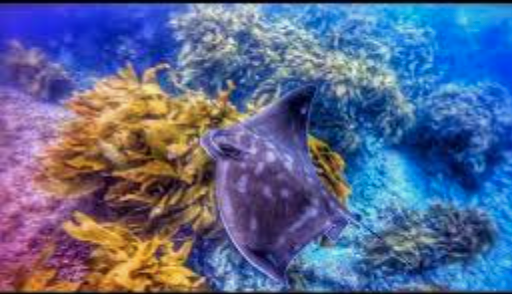
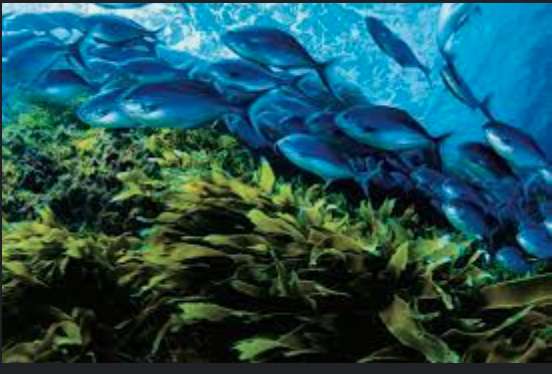
Kia ora 8F1! Welcome back to Term 1 for 2020. I hope you have had a great break and fun holiday and are ready to explore science! Below you will find this terms Achievement Objectives and the Learning Intention for the next few weeks. I have also outlined what will happen in each session of the week.
Big idea: ‘Te Taha Wairua’ - Connecting to the Goat Island marine environment
Achievement Objectives:
Living world
Students will:
Life processes
- Recognise that there are life processes common to all living things and that these occur in different ways.
Ecology
- Explain how living things are suited to their particular habitat and how they respond to environmental changes, both natural and human-induced.
Learning intention: We are learning to ...- Grow our knowledge and understanding of marine reserves, especially New Zealand
- Recognise the role of tangata whenua in marine conservation
- Understand the different habitats animal can live in
Success Criteria: I can ...
- Describe what a marine reserve is
- Understand that caring for our resources of the land and sea is important to our well being and survival
- Define the term habitat and give an example
Activities:
Lesson 1: Icebreaker games
Lesson 2: Work on your cover page in the book. You tube clip about marine reserves.
Lesson 3: Slide show "Protecting our marine world" and working through what we can do and what we cannot do in a marine reserve.
-

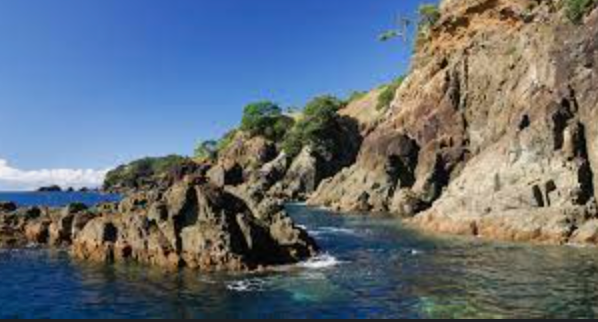
Kia ora 8F1! Welcome back to Term 1 for 2020. I hope you have had a great break and fun holiday and are ready to explore science! Below you will find this terms Achievement Objectives and the Learning Intention for the next few weeks. I have also outlined what will happen in each session of the week.
Big idea: ‘Te Taha Wairua’ - Connecting to the Goat Island marine environment
Achievement Objectives:
Living world
Students will:
Life processes
- Recognise that there are life processes common to all living things and that these occur in different ways.
Ecology
- Explain how living things are suited to their particular habitat and how they respond to environmental changes, both natural and human-induced.
Learning intention: We are learning to ...- Grow our knowledge and understanding of marine reserves, especially New Zealand
- Recognise the role of tangata whenua in marine conservation
- Understand the different habitats animal can live in
Success Criteria: I can ...
- Describe what a marine reserve is
- Understand that caring for our resources of the land and sea is important to our well being and survival
- Define the term habitat and give an example
Activities:
Lesson 1: Slide show and activity: Importance of protecting a range of NZ marine habitats.
Lesson 2: Discussions on habitats: Which habitats are found in NZ marine
Lesson 3: Different habitats around the world. Chose one and play the interactive game.
-


Kia ora 8F1! Welcome back to Term 1 for 2020. I hope you have had a great break and fun holiday and are ready to explore science! Below you will find this terms Achievement Objectives and the Learning Intention for the next few weeks. I have also outlined what will happen in each session of the week.
Big idea: ‘Te Taha Wairua’ - Connecting to the Goat Island marine environment
Achievement Objectives:
Living world
Students will:
Life processes
- Recognise that there are life processes common to all living things and that these occur in different ways.
Ecology
- Explain how living things are suited to their particular habitat and how they respond to environmental changes, both natural and human-induced.
Learning intention: We are learning to ...- Grow our knowledge and understanding of marine reserves, especially New Zealand
- Recognise the role of tangata whenua in marine conservation
- Understand the different habitats animal can live in
Success Criteria: I can ...
- Describe what a marine reserve is
- Understand that caring for our resources of the land and sea is important to our well being and survival
- Define the term habitat and give an example
Activities:
Lesson 1: Powerpoint presentation on ecosystems and different habitats. Play the interactive game on habitats.
Lesson 2: Discussions on h abitats: Which different types of habitats are found in NZ marine reserves. Fill out the worksheet.
Lesson 3: Student led conference
-


Kia ora 8F2! Welcome back to Term 1 for 2020. I hope you have had a great break and fun holiday and are ready to explore science! Below you will find this terms Achievement Objectives and the Learning Intention for the next few weeks. I have also outlined what will happen in each session of the week.
Big idea: ‘Te Taha Wairua’ - Connecting to the Goat Island marine environment
Achievement Objectives:
Living world
Students will:
Life processes
- Recognise that there are life processes common to all living things and that these occur in different ways.
Ecology
- Explain how living things are suited to their particular habitat and how they respond to environmental changes, both natural and human-induced.
Learning intention: We are learning to ...- Grow our knowledge and understanding of marine reserves, especially New Zealand
- Recognise the role of tangata whenua in marine conservation
- Understand the different habitats animal can live in
Success Criteria: I can ...
- Describe what a marine reserve is
- Understand that caring for our resources of the land and sea is important to our well being and survival
- Define the term habitat and give an example
Activities:
Lesson 1: Powerpoint presentation on different marine habitats
Lesson 2: New Zealand's native marine mammals
Lesson 3: Practical: Make blubber to understand how mammals are keeping themselves warm.
-
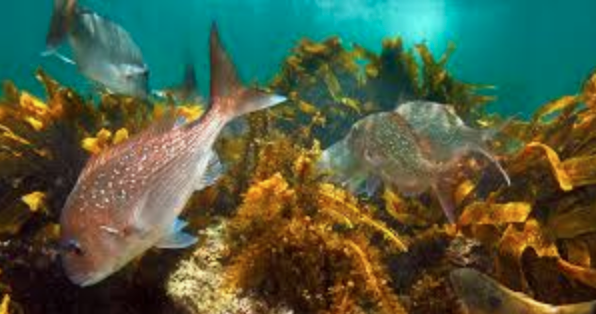
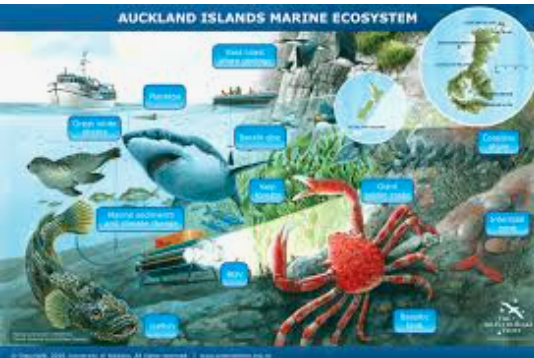
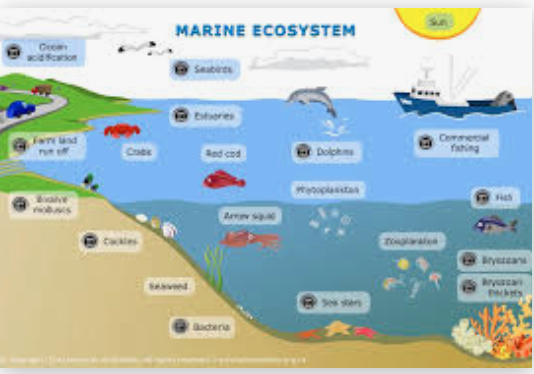
Kia ora 8F1! Below you will find this terms Achievement Objectives and the Learning Intention for the next few weeks. I have also outlined what will happen in each session of the week.
Big idea: ‘Te Taha Wairua’ - Connecting to the Goat Island marine environment
Achievement Objectives:
Living world
Students will:
Life processes
- Recognise that there are life processes common to all living things and that these occur in different ways.
Ecology
- Explain how living things are suited to their particular habitat and how they respond to environmental changes, both natural and human-induced.
FOCUS / ARONGA learning intentions:
- We are FOCUSING to develop our understanding about food chains
- We are FOCUSING to compare the terms herbivores, omnivores, and carnivores
- We are FOCUSING to Identify different animals in a food web.
- We are FOCUSING to understand how animals adapt to their environment
Success Criteria: I can ...
- Name the different animal in a food chain
- Explain what a herbivore, omnivore, and carnivore is
- Create a food web
- Describe how an animal can adapt to its environment with one example
Activities:
Lesson 1:
Practical:
Fish dissection and fill out questions related to it.
Lesson 2:
Make a food chain and determine the carnivore, and herbivore, and omnivores.
Google classroom tasks
Lesson 3:
Adaptations: Powerpoint presentation
Worksheet
Start designing your own unique animal
-



Kia ora 8F1! Below you will find this terms Achievement Objectives and the Learning Intention for the next few weeks. I have also outlined what will happen in each session of the week.
Big idea: ‘Te Taha Wairua’ - Connecting to the Goat Island marine environment
Achievement Objectives:
Living world
Students will:
Life processes
- Recognise that there are life processes common to all living things and that these occur in different ways.
Ecology
- Explain how living things are suited to their particular habitat and how they respond to environmental changes, both natural and human-induced.
FOCUS / ARONGA learning intentions:
- We are FOCUSING to develop our understanding about food chains
- We are FOCUSING to compare the terms herbivores, omnivores, and carnivores
- We are FOCUSING to Identify different animals in a food web.
- We are FOCUSING to understand how animals adapt to their environment
Success Criteria: I can ...
- Name the different animal in a food chain
- Explain what a herbivore, omnivore, and carnivore is
- Create a food web
- Describe how an animal can adapt to its environment with one example
Activities:
Lesson 1:
Make a food chain and then create a food web. Make sure you have the arrows pointing in the right direction.
Lesson 2:
Prepare for Goat Island: Identify different organisms you might find on your trip.
Lesson 3:
Goat Island Trip
-
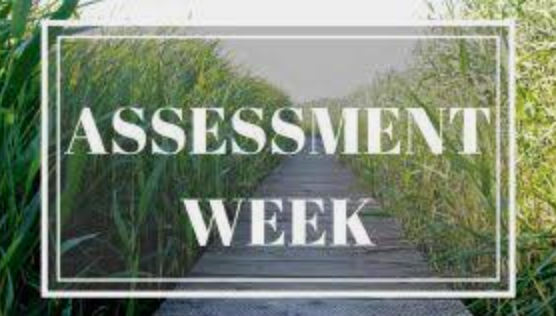
Kia ora 8F1! Below you will find this terms Achievement Objectives and the Learning Intention for the next few weeks. I have also outlined what will happen in each session of the week.
Big idea: ‘Te Taha Wairua’ - Connecting to the Goat Island marine environment
Achievement Objectives:
Living world
Students will:
Life processes
- Recognise that there are life processes common to all living things and that these occur in different ways.
Ecology
- Explain how living things are suited to their particular habitat and how they respond to environmental changes, both natural and human-induced.
ASSESSMENT WEEK - Introduction of the combined Global, English and Science assessment on Monday.
PLAN & DO / WHAKAMAHI learning intentions:
- We are PLANNING to create a food web from animals and plants we have seen in Goat Island so that we can show our knowledge about Marine reserves.
- We are PLANNING to describe the habitat which can be seen in Goat Island Marine Reserve so we are able to create different food chains found within Goat Island.
Activities:
Lesson 1:
Work on your science part of the assessment.
Lesson 2:
Work on your science part of the assessment.
Lesson 3:Work on your science part of the assessment.
-
For the purpose of this assessment students will create a script & storyboard for an informative advertisement about Goat Island.
-

Kia ora 8F1! Below you will find this terms Achievement Objectives and the Learning Intention for the next few weeks. I have also outlined what will happen in each session of the week.
Big idea: ‘Te Taha Wairua’ - Connecting to the Goat Island marine environment
Achievement Objectives:
Living world
Students will:
Life processes
- Recognise that there are life processes common to all living things and that these occur in different ways.
Ecology
- Explain how living things are suited to their particular habitat and how they respond to environmental changes, both natural and human-induced.
ASSESSMENT WEEK - Introduction of the combined Global, English and Science assessment on Monday.
PLAN & DO / WHAKAMAHI learning intentions:
- We are PLANNING to create a food web from animals and plants we have seen in Goat Island so that we can show our knowledge about Marine reserves.
- We are PLANNING to describe the habitat which can be seen in Goat Island Marine Reserve so we are able to create different food chains found within Goat Island.
Activities:
Lesson 1:
Finish your assessment and upload it on MHOL.
Lesson 2:
Structure and function of green lipped mussels. Powerpoint presentation.
Lesson 3:
Let's look inside a mussel. -
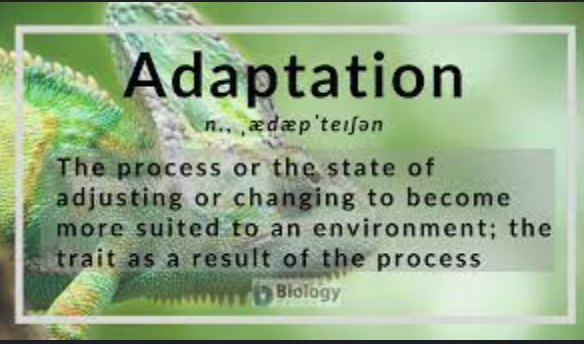
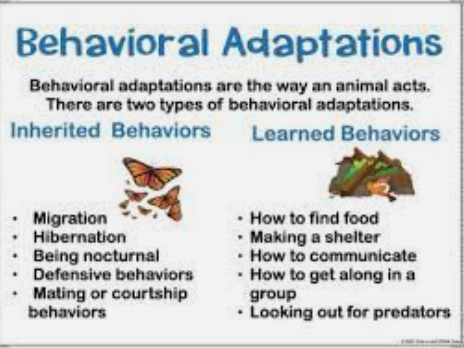
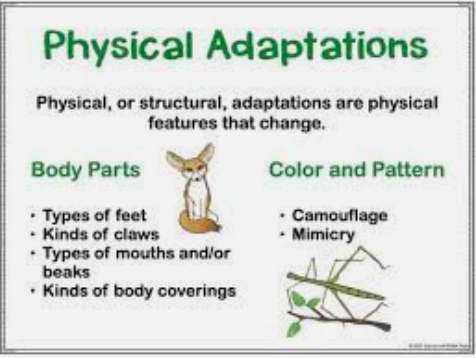
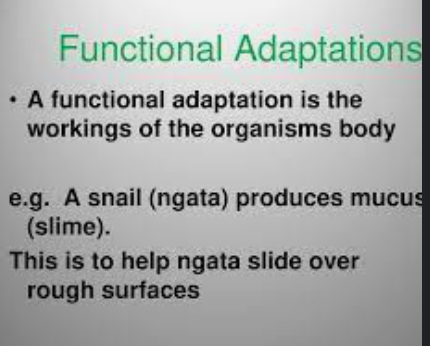
Kia ora 8F1! Below you will find this terms Achievement Objectives and the Learning Intention for the next few weeks. I have also outlined what will happen in each session of the week.
Big idea: ‘Te Taha Wairua’ - Connecting to the Goat Island marine environment
Achievement Objectives:
Living world
Students will:
Life processes
- Recognise that there are life processes common to all living things and that these occur in different ways.
Ecology
- Explain how living things are suited to their particular habitat and how they respond to environmental changes, both natural and human-induced.
FOCUS / ARONGA learning intentions:
- We are FOCUSING to develop our understanding about food chains
- We are FOCUSING to compare the terms herbivores, omnivores, and carnivores
- We are FOCUSING to Identify different animals in a food web.
- We are FOCUSING to understand how animals adapt to their environment
Success Criteria: I can ...
- Name the different animal in a food chain
- Explain what a herbivore, omnivore, and carnivore is
- Create a food web
- Describe how an animal can adapt to its environment with one example
Activities:
Lesson 1: Powerpoint presentation of adaptation
Lesson 2:
Adaptation: Magic school bus and worksheet
Lesson 3:
Practical investigation: Adaptation
-




Kia ora 8F1! This is the last week of term.
Big idea: ‘Te Taha Wairua’ - Connecting to the Goat Island marine environment
Achievement Objectives:
Living world
Students will:
Life processes
- Recognise that there are life processes common to all living things and that these occur in different ways.
Ecology
- Explain how living things are suited to their particular habitat and how they respond to environmental changes, both natural and human-induced.
FOCUS / ARONGA learning intentions:
- We are FOCUSING to develop our understanding about food chains
- We are FOCUSING to compare the terms herbivores, omnivores, and carnivores
- We are FOCUSING to Identify different animals in a food web.
- We are FOCUSING to understand how animals adapt to their environment
Success Criteria: I can ...
- Name the different animal in a food chain
- Explain what a herbivore, omnivore, and carnivore is
- Create a food web
- Describe how an animal can adapt to its environment with one example
Activities:
Lesson 1: Practical: Making ice cream.
Lesson 2:
Finish work from last week.
Lesson 3:
Science Kahoot about this terms content.
-
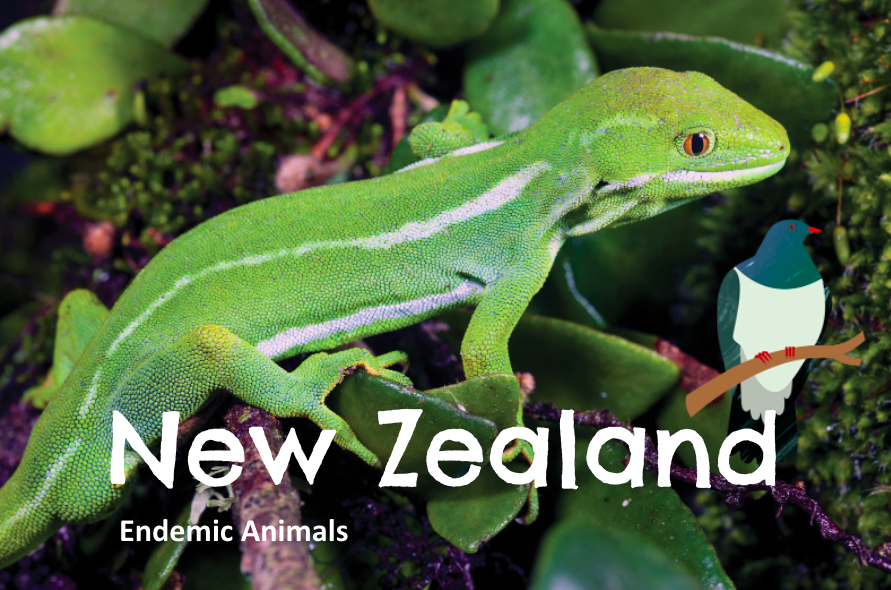
Researching New Zealand Endemic Species
Note: Mrs Williamson is away this week
Learning Outcomes
This week we are learning
- About some of New Zealand's endemic species
Success Criteria
This week we have
- Researched an endemic species and answered specific questions
Activities- Create a one-page Google Slide fact sheet
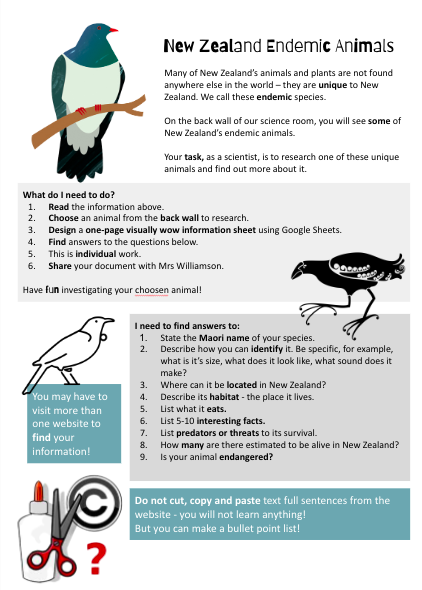
-
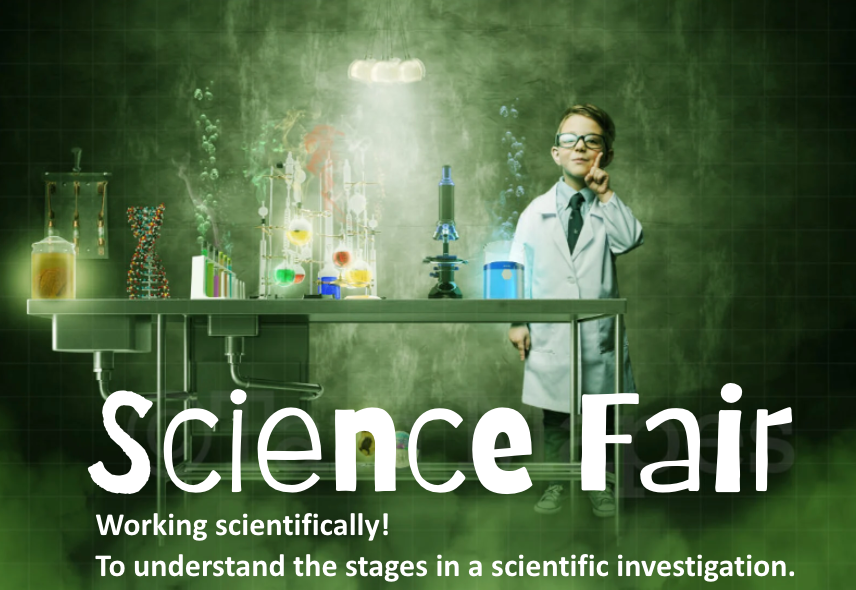
Science Fair - Investigating Scientifically
Learning Intentions - for this term:- We are EXPLORING how to work scientifically - to understand the stages in a scientific investigation.
- We are EXPLORING how scientists ask questions about the world around them that lead to investigations, and that open-mindedness is important as there can be more than one explanation.
- We are EXPLORING how we can extend our experiences and personal explanations of the natural world through exploration, play, asking questions, and discussing simple models
- We are EXPLORING how to build our language and develop our understanding of the many ways the natural world can be represented.
- We are EXPLORING how to act on issues and questions that link science learning to your daily lives.
Success Criteria - for this week in class:
- We have had a brief introduction to the Science Fair and what it means to investigate scientifically.
- We learnt that Focus Friday, should I choose to attend, is where I can develop my own Science Fair project and enter into the annual competition. Mrs Williamson will work through this with us every Friday.
- We have been introduced to the Science Rules that we must adhere to when performing Science Experiments and Investigations.
Activities - for this week in class:- Watched Science Safety Rules Video
- Signed Science Class Rules Contract
- Set up our learning page in our book
- Listed different types of science
- Answered questions to get us thinking about science
- Carried out how to make a simple sandwich to learn about writing clear instructions
- Science investigations: Lava lamps
-

Learning Intensions- for this term:
- See the beginning of term week of 9 May
Success criteria - for this week in class:
- I understand the difference between a science activity and science investigation.
- I understand that I must work safety when conducting science investigations.
- I am learning how to follow instructions for investigations.
- I am learning the science behind investigations - lava lamp.
- I am learning how to draw scientifically.
- I am learning to work in the classroom as a team member.
Activities - for this week in class:- Youtube watching and note-taking: The science behind the Lava Lamp experiment link: https://www.youtube.com/watch?time_continue=2&v=uigGqYeSXvk&feature=emb_logo
- Drawing: How to draw science apparatus
- Keyword list: Started developing a classroom key word list
- Explored: In class we explored the Scientific Method gaining an overview of the steps; how to write an interesting question; how to conduct research using the internet without 'copying and pasting' to identify key information that we understand; and defining a hypothesis (what if statements).
-

Learning Intentions - for this term:
- See the beginning of term week of 9 May
Success criteria for this week in class:
- I can work scientifically in class when carrying out science investigations.
- I am learning the science behind our practical investigations.
- I am learning the steps behind the scientific method.
- I am learning to record data into a table and how to analyse data - mean and percentages.
- I am learning how to take my answers and writing from an achieved level to above.
- I am learning how to take tidy science notes.
Activities - for this week in class:- Science investigation: Dropping on a coin
- Science investigation: Tasting chocolate
- Understanding: The steps of an investigation for example - repeating trials - reviewing the results, counting, average, and writing the data into a table, writing up an experiment, drawing the experimental set-up
- Exploring: How the hypothesis links to the conclusion, how to analyse results
- Reflection: How we are going as a team, are our books tidy, are we keeping up with the pace?
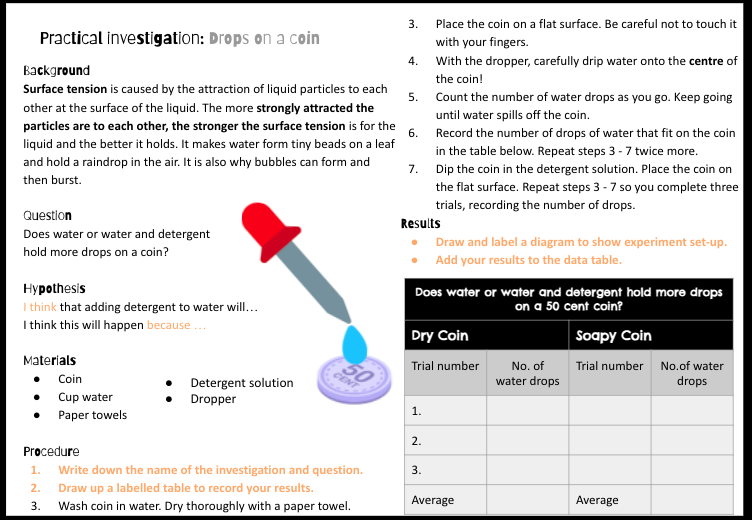
-

This week we are returning to home learning for one day a week!
Learning Intentions - for this term:
- See the beginning of term week of 9 May
Success criteria for this week in class:My home learning success criteria
- I am able to complete my science tasks at home and continue my Science learning. I know that I need to check in with Mission Heights Online to find out what I need to do if I missed instructions in class or to contact one of my friends to find out if I get stuck.
Class learning success criteria- I can identify how errors may occur in Science Investigations and how I might eliminate them
- I understand the term fair test and why this is carried out
- I am further extending my knowledge and experience on carry out investigations.
Activities - for this week in class:
My home learning activity:- This week I am to carry on working on my Endemic Species...... I need to check that I answered all the questions (I will check Google Classroom); I am confident that I have done enough research to understand my species and my page is full of information that answers the questions; I am learning to write my answers in my own words; I have presented in all on one page and I have you checked my punctuation and use of capital letters. See examples below.
- Recognising how to avoid errors
- Practical investigation: Ready set go
- Fair testing and variables
-

This week we had a short week - Monday Queens Birthday weekend, Tuesday Teacher Only Day
Learning Intentions - for this term:
- See the beginning of term week of 9 May
Success criteria for this week in class:
- I am learning how to set up an experiment to test and trial.
- I am learning how recognise the three different variables - controlled, independent, dependent.
- I am learning how to research and visit multiple websites to extend my learning.
- I am learning how we link information together and make connections e.g chemistry of the egg shell dissolving and the rubber egg
- I am learning how to make and record observations from an experiment.
- I am learning behind every experiment, no matter how simple. there is a lot of science happening!!
Activities in class- Scientific investigation: Egg-citing Bounce Off Experiment - reading, following instructions and setting up an experiment.
- Answering specific questions by researching using Google to take my understanding further.
- Label and draw the experimental set up and follow-up observations.
- Participating in team work, team help and class discussion.
- See the beginning of term week of 9 May
-

Learning Intentions - for this term:- See the beginning of term week of 9 May
Success criteria for this week in class:
- I am learning about how to observe what happens in an experiment.
- I am learning to collect data and record it in a table.
- I am learning how to write the experiment list and method.
- I am learning how to graph my data.
Activities in class:- Scientific investigation: Egg-citing Bounce Off Experiment - this week we are collecting data and graphing.
- Handouts for drawing tables and graphing.
- Participating in team work, team help and class discussion
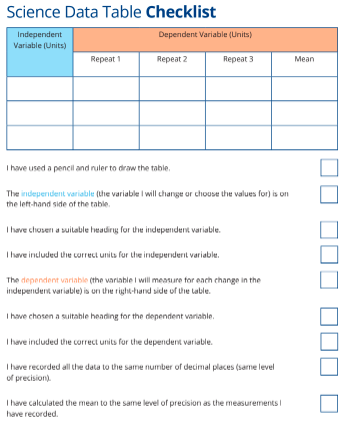
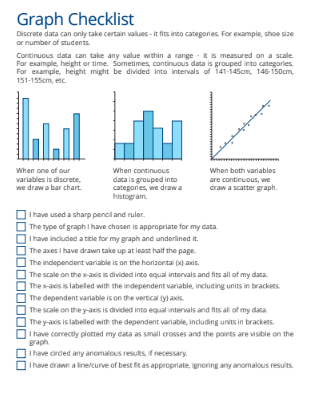
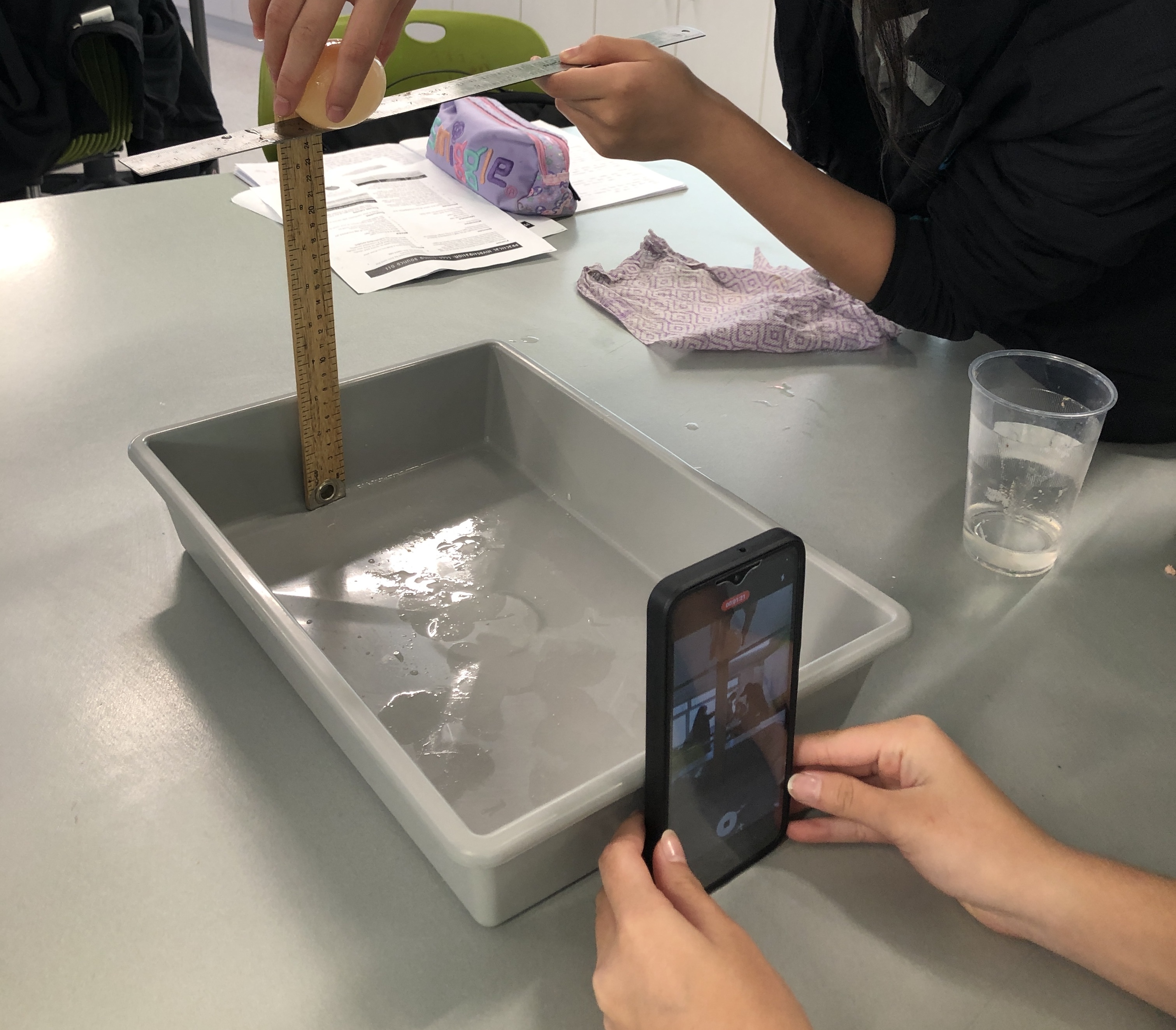
- See the beginning of term week of 9 May
-

Learning intentions:
- We are REFLECTING as we progress in science to assess our understanding at various check points.
- We are REFLECTING on our understanding prior to commencing our science investigation assessment.
Success criteria:
- I understand how to write a review based on the results of a scientific investigation.
- I understand how the conclusion links to the hypothesis and how to write a few sentences to say of my conclusion was correct or incorrect.
- I understand the order of steps in a scientific investigation.
- I can find the information in my school notes to help me in my planning.
- I can work through the process of a scientific investigation and the practical experiment.
Activities:
- Writing notes on how to write a review and conclusion.
- Finish of graph work from the egg experiment.
- Ensuring my book notes are in order to help me with my practice investigation.
- Science investigation: Heat particles on the move
-

PLAN & DO / WHAKAMAHI Learning intentions:
- We are PLANNING.to demonstrate our understanding by carrying out a scientific investigation.
- We are PLANNING to publish our work using Google Docs.
- We are PLANNING to write a hypothesis and solve using data collated from our practical investigation.
- We are PLANNING to use numeracy and literacy skills in our report.
Success criteria:- I can set up an experiment and collect data
- I can record the data into a data table
- I can calculate the mean
- I can transfer the data to a graph
- I can draw a graph
- I can draw some conclusions from my graph
- I can think of ways to improve an investigation
- I am working my way through my science assessment with a partner and I am using my checklist to help me
Activities in class:- Science Investigation: Measuring the speed of heat particles through different temperatures
- Assessment task sheet: Completing the steps for a science investigation with a buddy - collecting data into tables, drawing a graph and writing a review, etc.
-
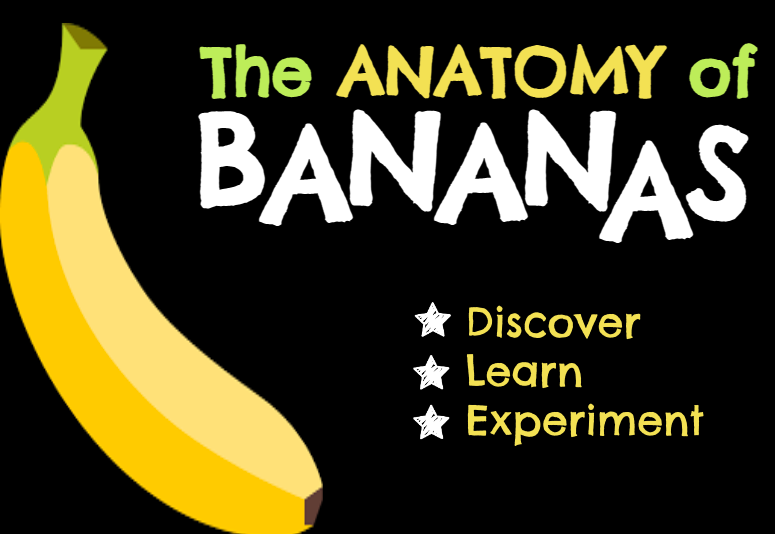
The Anatomy of the BananaFOCUS / ARONGA learning intentions:
- We are focusing on Life processes and deducing that life processes are common to all living things and that these occur in different ways.
- We are focusing on the Structure of matter and begin to develop an understanding of the particle nature of matter and use this to explain observed changes.
Success criteriaThis week Mrs Williamson is on COVID leave, so our focus is on increasing our science knowledge through a quiz and other activities to show we can work independently.
Activities in class- Our new context is "The Anatomy of the Banana" it is exciting - TASK 1; please can you create a WOW one-page design for this term's work in your book. See Mission Heights online for a quick look!
- Then TASK 2 is to complete the Quiz in Google Classroom. The questions are 'everyday' things you need to know (please don't copy from your friend) as you won't learn! Some answers will be quick to do - others questions will require more detailed explanations. If you don't know the answers, Google Search them.
- If you have finished this, TASK 3 is to complete the Education Perfect Task on Heat.
- If you have finished all the above, TASK 4 is to create your Science Quiz; you can use my template to guide you or create your own.
-

EXPLORE / TŪHURA learning intentions:
- We are EXPLORING the anatomy of plants, researching cell types, displaying plant cells, connecting with their functions, analysing and calculating the size of cells, questioning cloning, discovering chemistry basics, experimenting with microscopes, and learning about cellulose. transpiration, photosynthesis and eating bugs for dinner.
The Anatomy of the BananaMrs Williamson is away this week
Success criteria- You are embarking on an adventure of self-learning this week. You will earn by yourself by gathering information, processing it, and retaining it without the assistance of someone else (your teacher). Are you up for the challenge?
Activities in class- All the activities have been placed on Google Classroom.
- Go to BrainPOP and log in.
- Watch the water video and complete ALL the activities. It should take you all week to complete this task. You may need to stop and start the video to take notes.
- The only way to retain (remember) New information is to write it down. You need to take notes and design an A3 page showing your learning. Use a pencil and colouring-in pencils.
- This is individual work.
- Your challenge is to make this colour and informative (lots of information) as possible.
- Remember, tidy work.
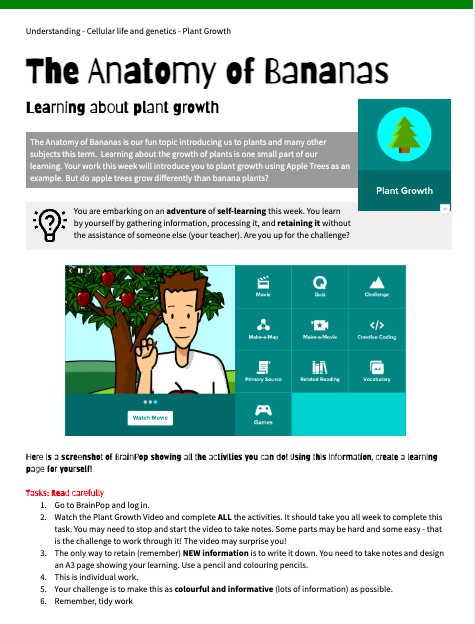
-

The Anatomy of Bananas
Mrs Williamson is back this week
Success criteria (I can...)- Define words such as anatomy, biology, botanical, endocarp, mesocarp, exocarp, negative geotropism
- Describe the structure of a true berry
- Draw and label the parts of a berry
- Fairly mark my assessment and understand how feed forward words to help me next time
Activities in class- This week Mrs Williamson was back in class to introduce us formally to our context - The Anatomy of Bananas.
- We created our title page.
- We started discovering about bananas and that they are grown on plants not trees, and that they are a berry.
- We learnt the true biological definition of a berry - including words such as exocarp, endocarp and mesocarp.
- We identified which fruits are vegetables are classified as true berries.
- We learnt a little on suffixes and prefixes used in science e.g. bio - , - logy, geo -
- We searched why bananas are curved and learnt how to break down difficult words so we can understand them e.g. negative geotropism.
- We also participated in marking our assessment together as a class and online to understand more about the marking structure and what teachers are looking for.
-

The Anatomy of Bananas
Success criteria (I can...)- As per below in the images.
Activities in class- Moving from learning about bananas to learning about broader concepts - e.g. cells.
- Quiz - test our learning of the anatomy of bananas
- Recapped on learning from term 1 what is life - using life processes to define living organisms
- Identified different cells in animals and plants




-

Success criteria (I can...)
- Understand that cells are very small compared to other objects
- Recognise that there are smaller measuring units than mm
- Define the units of measurement we usually use to measure cells.
Activities in class
- Education Perfect task (Digital literacy task) - Introduction to cells and learning how to take our own notes.
- Quiz to test our learning.
- Discussion on how to become a more active learner.
- Opportunity to update holistic report.
- Started learning about the size of cells - link to interactive diagram comparing cells
- Comparing cell size activity
- Writing task describing how small cells are to another object.
Homework- If you scored low on the Science Quiz, please review the Education Perfect tasks we did earlier this week.
-

This week we finished off last week's learning intentions and then started learning about biological levels in an organisation
Success criteria (I can...)
- State the biological levels of the organisation.
- Describe the differences between abiotic and biotic factors
- List examples of abiotic and biotic factors
- Understand how each of these factors impacts others, and a mix of both is necessary for an ecosystem and organisms to survive.
Activities in class- Activity - How many cells
- Quiz to check in our learning
- Understanding levels of biological levels in an organisation
- Researching biotic and abiotic factors
Homework- Keep up with class work
-

PLAN & DO / WHAKAMAHI learning intentions:- We are PLANNING to construct a cell model alongside its the key function.
This week have started our understanding what is inside cells
Success criteria (I can...)
- Identify the main parts of a plant cell
- Describe functions of the main parts of a plant cell
Activities in class
- Activity - Making and modelling cell organelles using Plastercine
- Construction - Table of organelles and functions
- Understanding and being able to explain their cell model
- Research and collating information to extend knowledge on plant cells
Homework- Keep up with class work
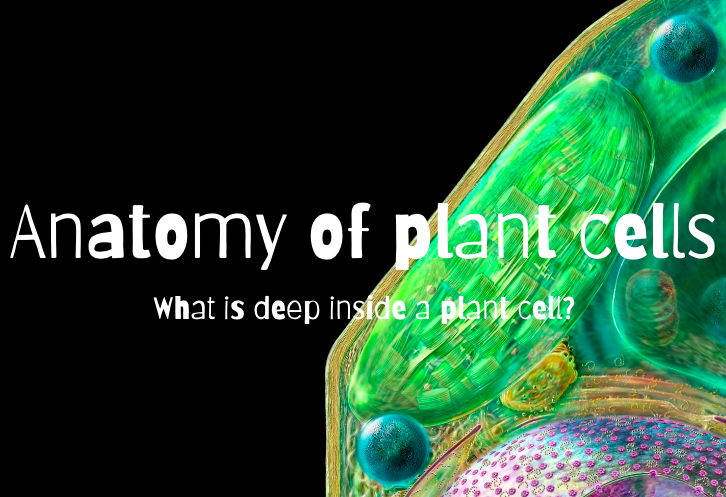
-
Continuation of 5th September.
-
Continuation 5th Sept
-

REFLECT / WHAIWHAKAARO learning intentions:- We are REFLECTING throughout the context by measuring our content knowledge through Education Perfect tasks and numerous class quizzes, discussions and check-in points.
- This week is a short week due to the Queen's Memorial Day, and Attitudes Presentation
- Draw and label the parts of a plant cell
- State the difference between a plant and animal cell
- Describe the key functions of the key parts of a plant cell
- Easily identify parts of the basic cells
- Numerous class quizzes and a Kahoot on cells to reflect on our learnings
Success criteria (I can...)
Activities
-

This week we are being introduced to chemistry and the periodic table.
Learning objectives
- We are beginning to develop an understanding of the particle nature of matter and use this to explain observed changes.
Success criteria
- I can define matter, and that matter consists of atoms and molecules.
- I can define an atom, molecule and element.
- I know that elements are arranged on the periodic table in numbers and groups.
- I have listed the first 20 elements plus 13 others that I will become more familiar with in science over the next few years.
Activities- Made a periodic table - stating the symbol and name for 20 elements plus another 13 and adding a key to the grouping system
- Google searched the top elements in the human body
- Made a list of the top 20 elements plus another 13 and listed where they may be found.
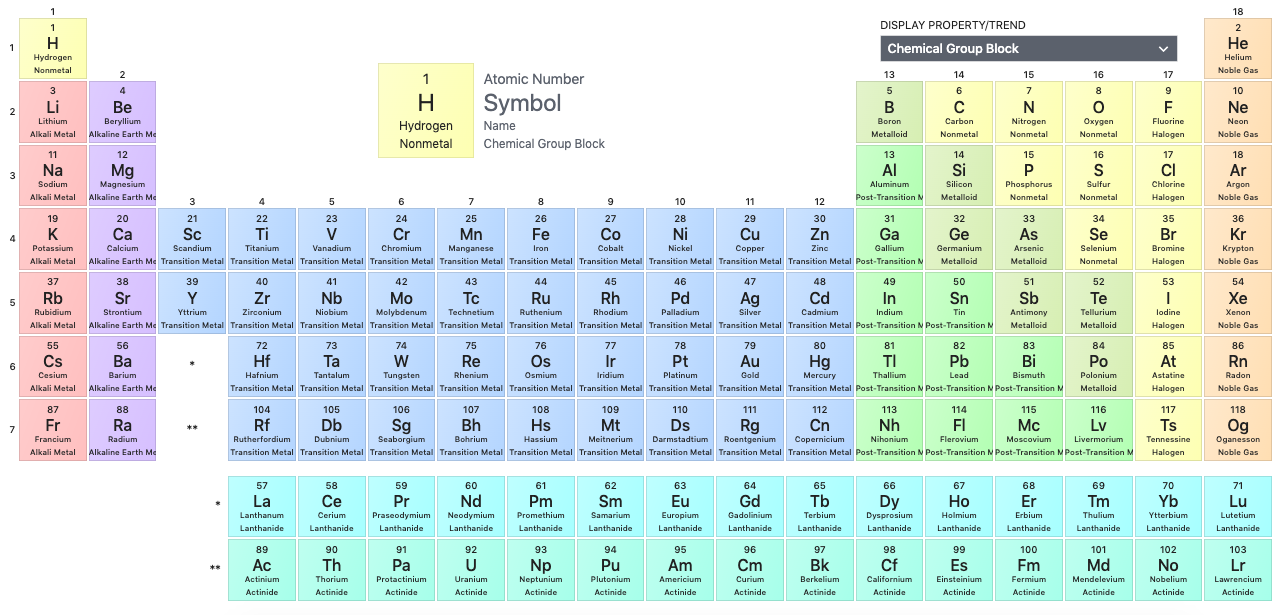
-

Success criteria - I can...
- Name the parts of the microscope.
- State the function of the parts of the microscope
- Prepare a wet mount slide.
- Calculate magnification
Activities- Practical investigation - using light and dissecting microscopes.
-

Success criteria - Discovering what cellulose is.
- Describe the structure of cellulose and where it is found in plants
- Describe cellulose as a chemical and complex carbohydrate and describe what it is made up of
- Describe why humans cannot digest cellulose, but it is vital for our diet
- Describe its uses and future potential
Activities
- Mindmap - collating class knowledge, Google research and video watching, including note-taking
- Practical investigation - celery and transpiration experiment set up
- Explored and listed common cellulose use in the home
- Explored future use of cellulose linking back to banana plantations
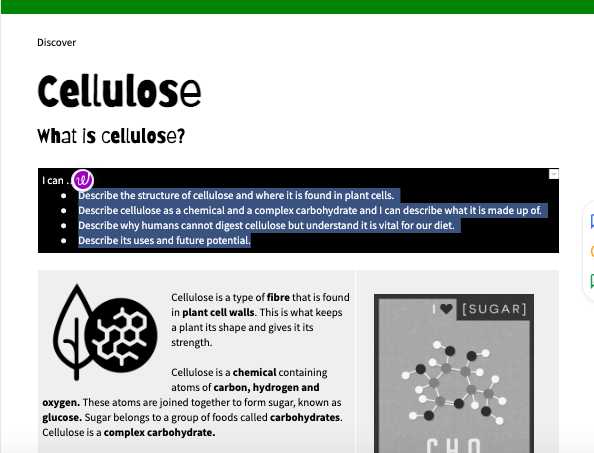
-

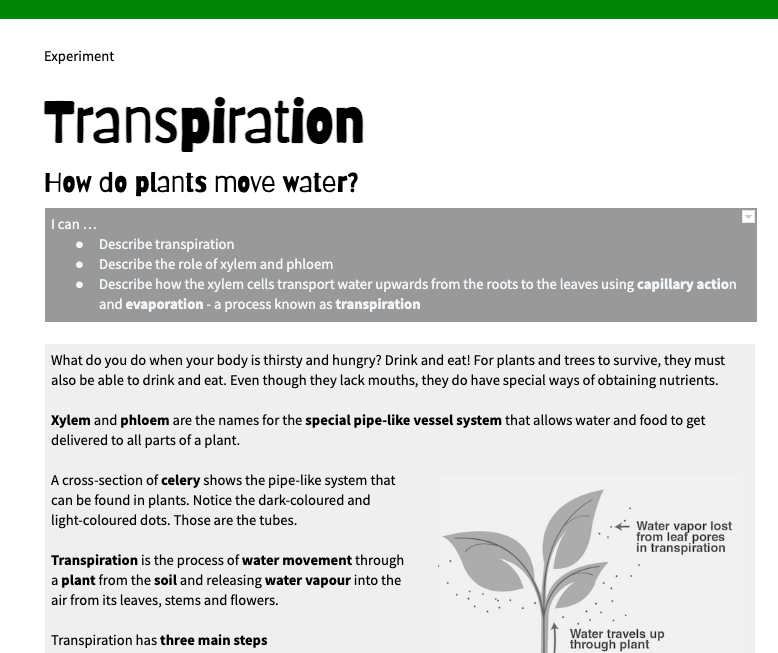
Success criteria - Discovering transpiration.
- Describe transpiration
- Describe the role of phloem and xylem
- Describe how the xylem cells transport water upwards from the roots to the leaves using capillary action and evaporation
Activities
- Practical investigation: Transpiration
- Report layout and writing
- Research
- Photography and drawing
- Self management tasks
-

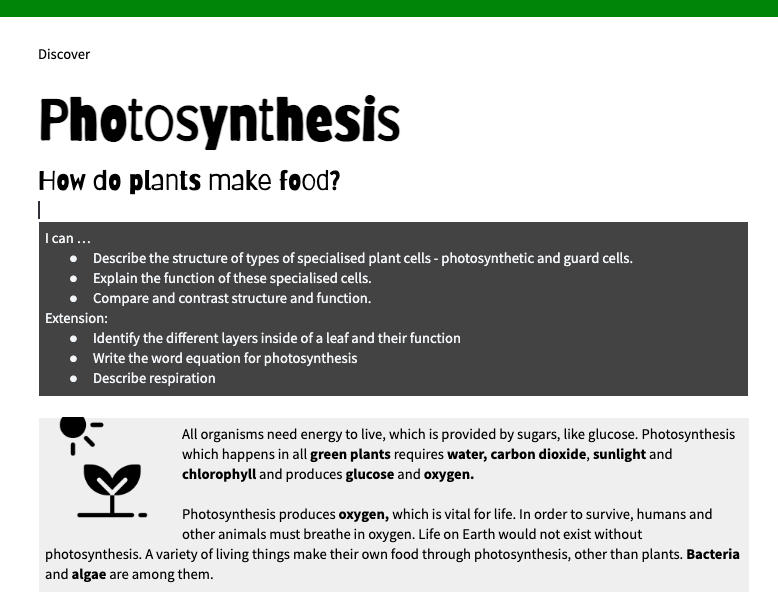
Success criteria:
- Describe the structure of specialised types of plant cells - photosynthetic and guard cells
- Explain the function of these cells
- Compare and contrast structure and function
Activities:- Education Perfect - self task
- Video - photosynthesis
- Q & A
- Group challenge Kahoots
-

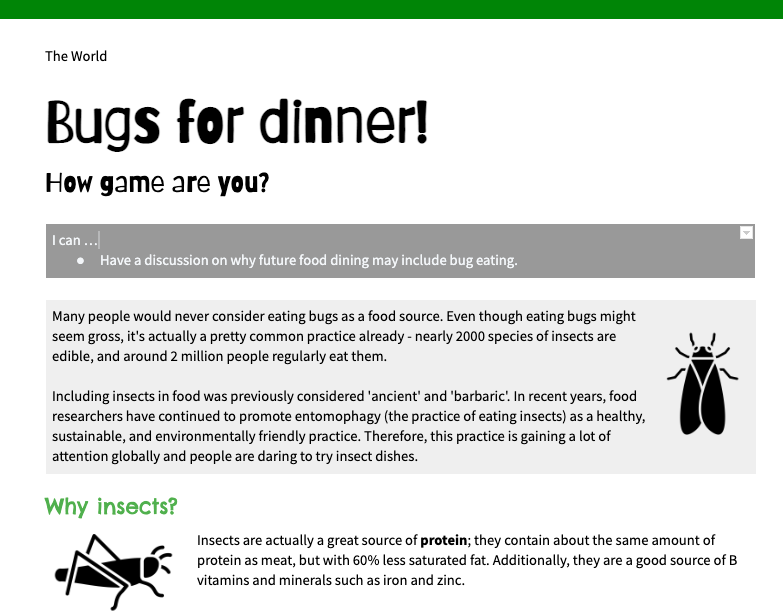
Success criteria:
- I can have a discussion on why future food dining may include bug eating
Activities:
- Q & A research questions;
- Bug eating
-
Finishing off terms context.








